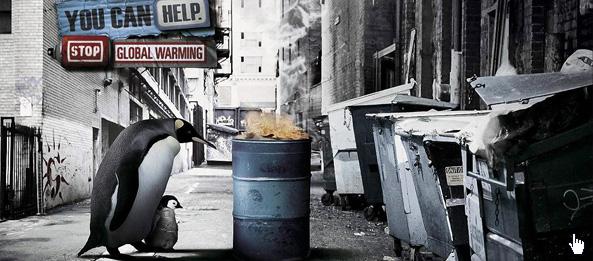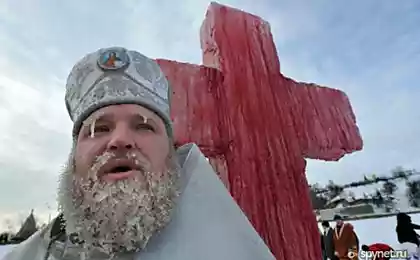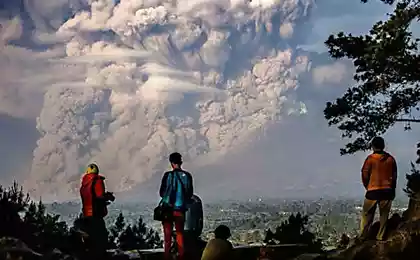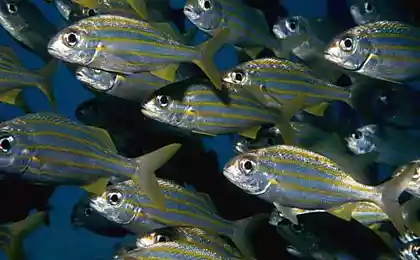1126
Global warming

Without the current atmosphere of greenhouse, the average temperature on our planet would be -15 degrees Celsius.
Natural content of carbon dioxide in the atmosphere has changed throughout history between 180 and 300 parts in a million (ppm). Today CO2 level fluctuates at around 380 ppm, which is 25% higher than the highest rate in the natural environment.
In 1997, the amount of CO2 in the atmosphere has increased by 2, 87 ppm, the increase was greater than in any other year of modern history.
The year 2005 was the warmest on record, 1998 and 2007 to take second place in the temperature reading in general. Eight warmest years on record were 1998 and 2005.
From the depths of the earth comes a lot of natural evaporation, water vapor, large amounts of carbon dioxide (CO2) and other gases entering the atmosphere, absorb solar energy and radiate it in the opposite direction. This type of warming is called the "natural greenhouse effect." "Greenhouse Effect", in spite of everything else, is responsible for global climate change due to the increase of CO2 concentration in the atmosphere of our planet.
Scientists predict an increase in average global temperature by 2, 5 degrees by the year 2100. In the Pliocene (1, 8 million years ago), when the temperature of the Earth was the equivalent of today, the sea level was at 3, 5-4, 5 meters higher.
Geologists believe that the sea level could rise by 20-60 centimeters by the end of the century if current warming trends will continue.
Throughout the world, hundreds of millions of people live in close proximity to the sea, and most of the world's population is concentrated in the coastal areas.
The number of polar bears has declined sharply, and they have virtually disappeared from their natural habitat, and no changes can no longer save the situation. Scientists estimate that about 20-25 thousand individuals polar bears still remained in the wild.
The first forced relocation in connection with the effects of climate change occurred in 2007, when 100 Pacific Islander Tegua were evacuated due to rising sea levels and subsequent flooding.
Over the past million years, the cool climate is mainly dominated by the planet. It is believed that in these conditions the human species could evolve.
Earth has experienced multiple cyclic climate change. Temperature jumps were recorded throughout the known history of the human race, such as the Little Ice Age of the seventeenth and eighteenth centuries, Medieval warm period of the eleventh century.
According to research by NASA, the average temperature worldwide has increased by 1, 5 degrees since 1880, while taking into account most of the changes taking place in recent decades.
Throughout the twelfth century, the Earth has experienced two trends of global warming.
The first peak of significant temperature rise came in the period from 1900 to 1930, and the second is a constant rise in temperature, since the 1970s.
The last two decades of the XX century were the hottest decade after more than 400 years, and possibly leading to temperature measurements over several thousand years.
Mathematical models predict climate melting of sea ice in the Arctic earlier and faster than the loss of land ice in Antarctica, provided that the current warming trends continue.
Since 1950, the Arctic ice decreased by 15%, and the average duration of the ice in the lakes and rivers of the northern part of the world decreased by two weeks.
Arctic ice sheets disappear too quickly, and scientists believe that the Arctic will begin to show its first soil cover in early 2040.
The average temperature in the arctic climate in Alaska, Canada and Russia has doubled compared to the world average of the last century.
Effects of global warming can destroy habitat and endangered species over a million species of plants and animals.
Between 1961 and 1997, the world's glaciers lost 890 cubic kilometers of ice.
In 1910, Glacier National Park in Montana had at their disposal 150 glaciers, of which today remains only 27.
The area of deserts around the world is growing as a result of the temperature rise. In late 2007, Australia has lost 25% of the crop due to desertification.
Swedish scientist Svante Arrhenius in 1896. More realized that human industrial activity already exceeds the ability of the Earth to the natural absorption of carbon dioxide
Burning fossil fuels currently adds about six billion tons of carbon dioxide into the atmosphere each year our planet. Only half of these gases emissions processed forests and oceans.
Massive deforestation are responsible for 20% of global warming as a result of gas concentration by inhibiting the reabsorption of carbon dioxide.
In the period from the first Earth Day in 1970 to the new millennium, greenhouse gas emissions caused by humans increased by 70%.
The Earth's atmosphere now contains 40% more CO2 than before the industrial revolution.
The population of the United States is 5% of the world community, but the American nation creates a demand for 25% of commercial energy consumption in the world and produces 22% of industrial carbon dioxide emissions in comparison with the world.
Cars have become causes 3/4 of all transport emissions. At the current rate in the world will be about 1 billion cars by 2030, and more than a billion in 2050.
About 75% of the annual increase in carbon dioxide in the atmosphere is characterized by the burning of fossil fuels.
More than 20% of carbon dioxide emissions accounted for petrol engine cars. While leadership on environmental damage still belongs to fossil fuel power plants.
A significant increase in atmospheric CO2 can of course increase the temperature, but not so much as water vapor, which accounts for more than 90% in the main components to create a greenhouse effect.
According to the Agency's internal energy, the richest country in the world over the next 25 years will invest about $ 20 trillion on new research in the field of energy, in the hope of slowing global warming.
























